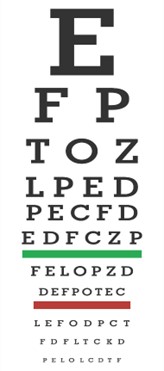A nurse is collecting data from a client who is 1 day postoperative following a total hip arthroplasty and has
deep-vein thrombosis. Which of the following findings should the nurse expect in the affected extremity?
Absent dorsal pedal pulse
Shiny, hairless skin
Irregular, bulging veins
Dull, aching pain
The Correct Answer is D
Choice A:
An absent dorsal pedal pulse would indicate a vascular problem such as arterial occlusion, not a deep vein thrombosis (DVT). In the case of DVT, blood flow in the veins is obstructed, but the arterial pulse, which is related to arterial circulation, should remain intact unless there is a separate arterial issue. Therefore, absent pulses are not characteristic of DVT.
Choice B:
Shiny, hairless skin is a sign typically associated with chronic arterial insufficiency, not DVT. This skin change occurs when there is poor arterial blood flow, which leads to a lack of nourishment for the skin, causing it to become thin and shiny. In contrast, DVT affects the veins and does not usually cause these skin changes in the acute phase.
Choice C:
Irregular, bulging veins are indicative of varicose veins or chronic venous insufficiency, not a DVT. Varicose veins occur when the veins become swollen and twisted due to weak or damaged valves. DVT, on the other hand, involves the formation of a clot in the deep veins and does not typically cause the veins to bulge visibly, especially in the early stages.
Choice D:
Dull, aching pain is a common symptom associated with deep vein thrombosis. This pain typically occurs in the affected extremity and is often described as a constant, aching sensation. The pain can worsen with movement or standing and is due to the inflammation and obstruction caused by the blood clot in the deep veins. This is a hallmark sign of DVT, along with swelling and redness in the affected limb.
Nursing Test Bank
Naxlex Comprehensive Predictor Exams
Related Questions
Correct Answer is A
Explanation
Answer: A
Rationale:
A) Hgb 20 g/dL:
A hemoglobin level of 20 g/dL is elevated and suggests polycythemia, which can occur in chronic respiratory conditions like COPD due to chronic hypoxia. Elevated hemoglobin levels can increase blood viscosity, leading to complications such as increased risk of thrombosis and cardiovascular stress. This finding indicates a potentially serious issue and should be reported to the healthcare provider immediately to address any underlying causes and manage the client's condition effectively.
B) Oxygen saturation 92%:
An oxygen saturation of 92% is slightly below the typical normal range (95-100%) but is not immediately life-threatening. While it indicates mild hypoxemia, it is a common finding in COPD patients, and the management would typically involve supplemental oxygen or adjustment of therapy. This finding should be monitored but is not the most critical issue to report immediately.
C) Productive cough with green sputum:
A productive cough with green sputum suggests a possible infection or exacerbation of COPD. Although this is an important finding that requires evaluation and possible treatment, it is less critical than an elevated hemoglobin level, which indicates a more acute systemic issue. The green sputum should be reported and managed, but it is not the priority compared to the elevated hemoglobin.
D) Chest x-ray shows hyperinflation of lungs:
Hyperinflation of the lungs is a common radiological finding in COPD due to air trapping. While it is a significant finding, it is generally consistent with the disease's progression and does not indicate an acute problem requiring immediate intervention. Monitoring and managing the underlying COPD are necessary, but this finding is less urgent than the elevated hemoglobin.
Correct Answer is D
Explanation
To test visual acuity using a Snellen chart, the nurse should have the patient wear glasses or contact lenses if they normally wear them . The patient should stand 20 feet from the chart . The nurse should tell the patient to first cover the right eye, then left eye, and lastly read the chart with both eyes .
The other options are not correct because:
a). The client should be positioned 20 feet away from the chart, not 3 meters (10 feet).
b) The nurse should document the smallest line the client can read accurately on the chart, not the largest line.
c) The nurse should instruct the client to begin the assessment by covering one eye and reading aloud the letters on the chart, beginning at the top and moving toward the bottom

Whether you are a student looking to ace your exams or a practicing nurse seeking to enhance your expertise , our nursing education contents will empower you with the confidence and competence to make a difference in the lives of patients and become a respected leader in the healthcare field.
Visit Naxlex, invest in your future and unlock endless possibilities with our unparalleled nursing education contents today
Report Wrong Answer on the Current Question
Do you disagree with the answer? If yes, what is your expected answer? Explain.
Kindly be descriptive with the issue you are facing.
